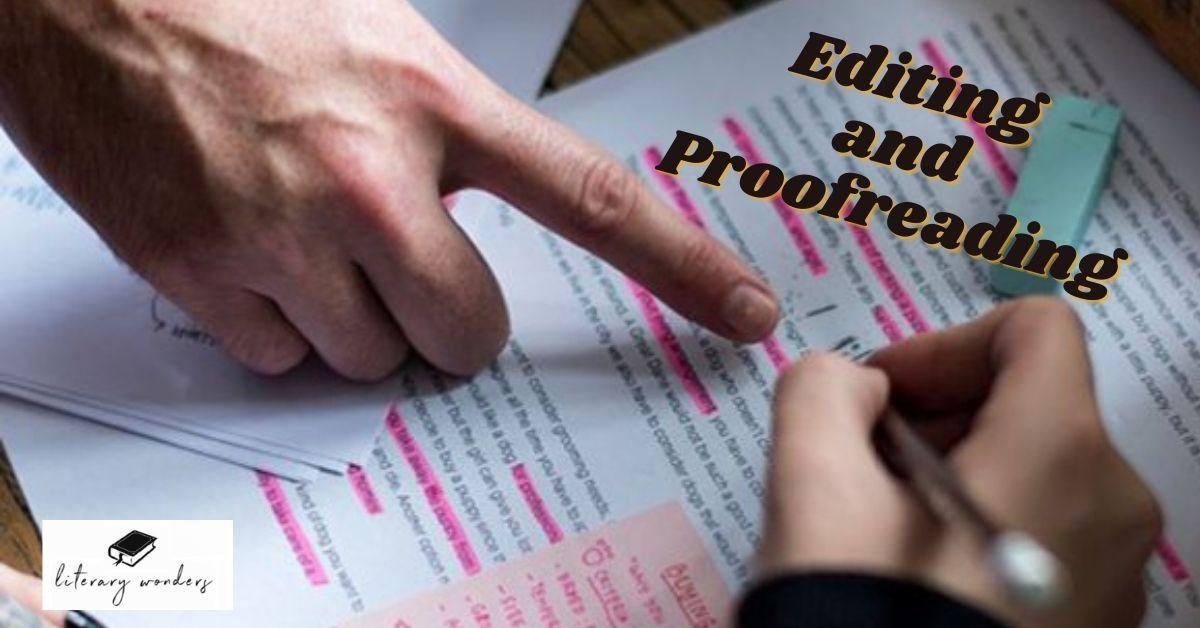What is editing?
As the name suggests, editing and proofreading involve certain processes of selecting and preparing written, visual, cinematic, or audible material for information or any other purpose. According to Oxford Dictionary, editing is “to prepare it for publication by correction, considering or otherwise modifying it.”
The readers consume any written material. Therefore, it needs to be typographically error-free and grammatically factual. In fact, it should be written in an easy-to-understand language without having any loophole so that the target audience would not face any difficulty while consuming it.
Self-Editing Versus Draft Editing
Self-editing means the writer corrects his mistakes by himself. Most writers prefer self-editing; they fix all possible errors, change words, and add or omit unnecessary information if it pushes their narrative. They keep on writing and correcting the mistakes, deleting and shifting around the sentences as they go. However, the self-editing finishes as soon as the report concludes.
Draft editing is to edit the draft to prepare it for publication. At this point, the role of the professional editors comes in. For draft edit, one needs to stop writing. He simply needs to gather the written material together, read them, and note the things that need to be rewritten.
Types of Editing
Developmental Editing
Developmental editing refers to a writing support needed before or after producing publishable material. In the past, people go for developmental editing even before writing their manuscripts to map out the things. The writers sit with the editors and discuss the underlying concepts, structure, organization, and presentation. Moreover, they examine the concept, flow of ideas, consistency, style, point of view, and if it’s fictional writing, they explore the plot, development of characters, and dialogues. Therefore, Developmental editing covers every aspect that makes the book a perfect read.
Copy Editing and Line Editing
A line editor works carefully line by line, joining up sentences and structure to make the language clearer and sharp. He carefully looks at the writer’s choice of words and syntax and how these two connect to the overall tone and emotions of the writing piece. Also, he is responsible for bringing a logical connection within the ideas of the text. On the contrary, the Copy editor checks that the language in the text clearly exhibits the usage of Standard English and adheres to the house style guide. Below are the duties of a copy editor.
- Checking texts for clarity and logic.
- Correcting grammar, punctuation, syntax, and words while maintaining the text’s originality.
- Checking the factual information and inconsistencies inflow.
- Cross-checking tables, equations, and references used in the text.
Part 2
What is Proofreading?
Proofreading refers to the last check for correction of errors before the work is sent for publication. Proofing generally involves careful reading through the pre-publication process to check spelling, punctuation, and typographical errors such as line spacing, layout, and page type. However, it is essential to understand that a proofreader does not change grammar, style, and consistency. Instead, his job is to check for:
- Punctuation, spelling, and other grammatical errors.
- Page numbers and their appropriate sequence.
- Logical arrangement of the content.
- Table of contents, chapter titles, headings, and subheadings listed in the index.
What are editing formats?
Until now, we have discovered the roles of proofreaders and editors and their different responsibilities while highlighting their work areas. Besides this nitty-gritty work of editing, the burden of an editor varies from job to job. Let’s take an example of a newspaper editor and examine in detail what an editor does in newspapers and newsrooms.
- Editor in Chief: He is responsible for all the areas of newspaper operation such as; newspaper design, its budget staffing and management of editors and staffing. He is the one who maintains a high-quality competition in the printing press.
- Managing Editor: He manages the day-to-day activities of the newsroom. His duties include maintaining paper quality, its different sections, and the size of the newspaper. Also, he is responsible for designing appropriate columns for business reports, national news, local news, and political affairs.
- Section Editor: He deals directly with journalists, reporters, and photographers to determine the section for each story his agency intends to publish.
- Sub-Editor: Sub-editor performs the duties of a copy editor. He corrects grammatical errors and structural elements of the text.
See Also:

